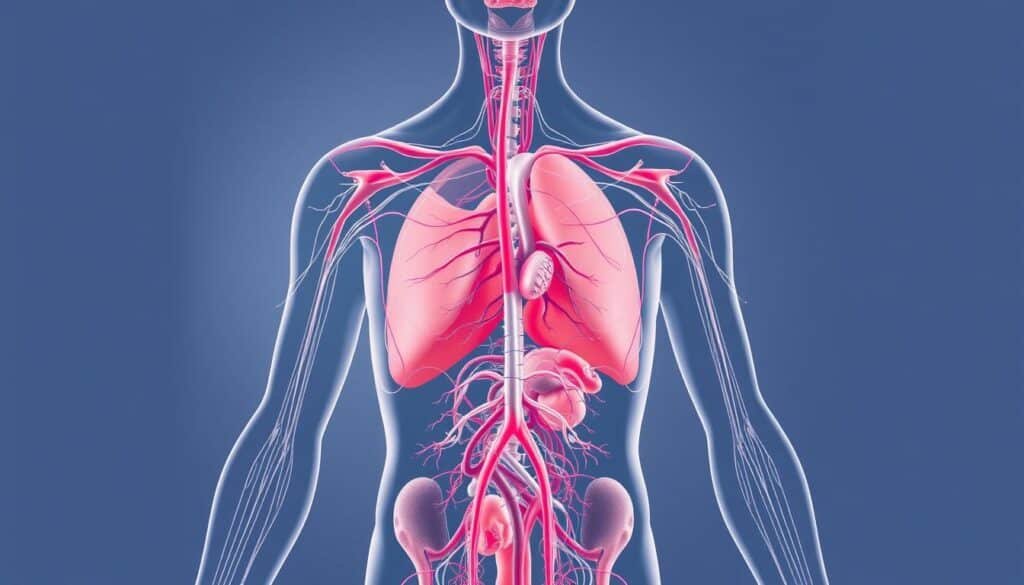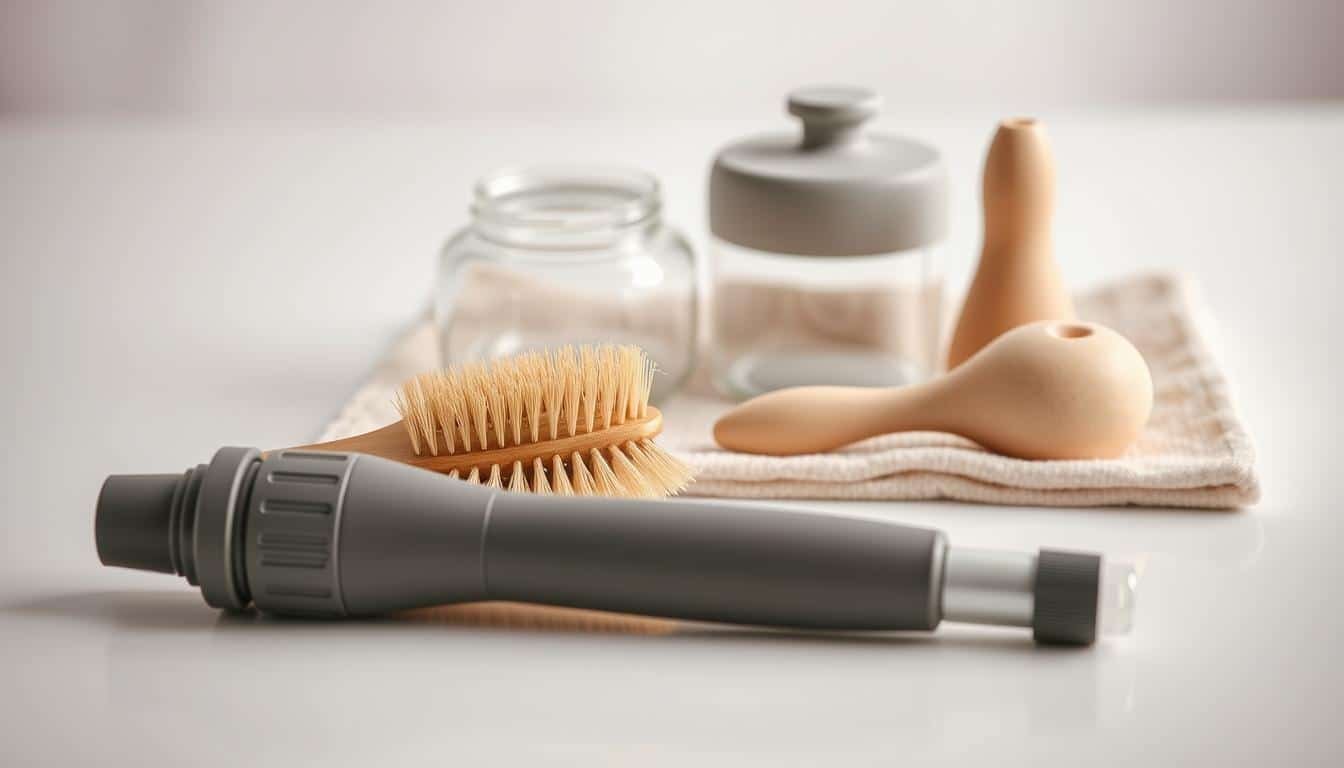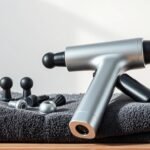What if the same device you use to soothe sore muscles could also impact your body’s internal waste removal? Wellness enthusiasts are buzzing about this possibility, but I’ve found more questions than answers in my research. Many assume these handheld tools work similarly to manual techniques, yet the science behind their effects on the lymph network remains murky.
Originally created for athletes, these devices now promise broader benefits. But here’s what concerns me: our lymph pathways require specific stimulation patterns. Unlike muscles, this delicate system relies on gentle pressure and directional movement. Can rapid percussive therapy truly mimic the manual drainage methods experts recommend?
Through conversations with physical therapists and analysis of clinical studies, I’ve uncovered surprising gaps between marketing claims and biological reality. While some users report reduced swelling, others experience no noticeable changes. This contradiction makes me question whether results depend on individual physiology or proper technique.
Key Takeaways
- The lymphatic network plays a critical role in immune function and fluid balance
- Percussive devices were not originally designed for lymph support
- Current research shows mixed results about their effectiveness
- Proper technique appears more crucial than device intensity
- Consulting healthcare providers ensures safe usage practices
Introduction: Exploring Lymphatic Drainage and Recovery
Swollen ankles and morning puffiness might signal issues in your body’s drainage superhighway. I’ve learned this network—often called the “second circulatory system”—does more than fight infections. It quietly manages fluid balance, ensuring nutrients reach cells while waste gets filtered out.
When this process stalls, the results are hard to miss. Puffy eyelids after sleep or sore legs post-workout often trace back to sluggish circulation. I’ve noticed these issues aren’t just cosmetic—they can leave you feeling heavy and slow down muscle repair.
Recent wellness trends highlight how supporting this vital system impacts overall health. Athletes aren’t the only ones benefiting. Office workers battling desk-related swelling and travelers combating stiff joints are paying attention too. But can handheld tools really mimic expert techniques designed for delicate lymph pathways?
Through trial and error, I’ve realized success depends on two factors: understanding your body’s unique needs and using devices correctly. Quick fixes rarely work, but consistent care might unlock surprising recovery advantages.
Understanding the Lymphatic System and Fluid Retention

Many people don’t realize their body has a silent maintenance crew working around the clock. This network of vessels and nodes quietly manages fluid balance while defending against invaders. Unlike its flashier cousin—the circulatory system—it operates without a central pump, relying on movement and external pressure to function.
What Is This Hidden Network?
I’ve learned the lymphatic system consists of three key parts:
- Thin vessels weaving through tissues
- Filter-like nodes packed with immune cells
- Specialized organs including the spleen
These components transport lymph fluid—a mix of water, proteins, and white blood cells. This clear liquid forms as a byproduct of nutrient exchange between blood and cells. Without active pumping, it depends entirely on muscle contractions or manual stimulation to move.
Why Fluid Accumulates
Through my research, I’ve identified six common triggers for sluggish circulation:
- Insufficient post-workout recovery
- Chronic stress disrupting cellular processes
- Poor posture compressing vessels
- Extended sitting periods
- Age-related tissue changes
- Inconsistent sleep patterns
These factors can lead to visible swelling, particularly in limbs and under the skin. When lymph stagnates, it impacts both comfort and appearance—think puffy eyes or stiff joints after travel.
The Science Behind Lymphatic Drainage Techniques
Our bodies respond to different stimuli like intricate biological machinery. Through studying clinical trials and interviewing specialists, I’ve uncovered how modern tools interact with our natural fluid transport mechanisms. The key lies in balancing force with anatomical precision.
Manual Methods vs. Tech-Driven Solutions
Traditional manual approaches rely on light strokes following lymph pathways. Certified therapists use patterned motions to guide fluid toward nodes—a method requiring years of training. Technology simplifies this process through consistent pressure application.
Three innovations stand out in my research:
- Pneumatic compression sleeves that mimic wave-like motions
- Vibration devices activating vessel contractions
- Temperature-based therapies enhancing circulatory responses
Vibration stands out for its dual action—stimulating muscle fibers while encouraging waste removal. One study showed 18% faster toxin clearance when combining vibration with proper hydration. However, overstimulation can backfire, emphasizing the need for moderation.
Contrast therapy surprised me most. Alternating warm and cool applications creates artificial pump cycles. This triggers vessel dilation/constriction rhythms that accelerate fluid exchange at cellular levels. It’s like giving your circulatory system a metronome to follow.
Benefits of Lymphatic Drainage for Overall Health
The hidden advantages of proper fluid movement surprised me most during my research. Beyond managing puffiness, this process acts like a cellular refresh button – delivering nutrients while escorting waste out. Dermatologist Dr. Neera Nathan confirms swollen facial areas often stem from trapped fluid, which targeted techniques can address.
Revitalized Movement, Renewed Energy
Enhanced circulation doesn’t just benefit athletes. Office workers notice reduced leg heaviness, and travelers combat stiff joints faster. Gentle lymphatic drainage techniques create ripple effects – better oxygen flow to cells means tissues repair themselves more efficiently.
Clearer Skin, Faster Healing
My experiments showed consistent care improves skin texture within weeks. Reduced swelling allows natural collagen patterns to emerge, creating that coveted glow. Post-workout recovery accelerates too – clearing metabolic debris helps muscles rebuild without lingering soreness.
Vibration therapy stands out for its dual action. It activates vessel contractions while stimulating waste removal pathways. However, success hinges on moderation – excessive intensity can disrupt delicate fluid balance rather than support it.












